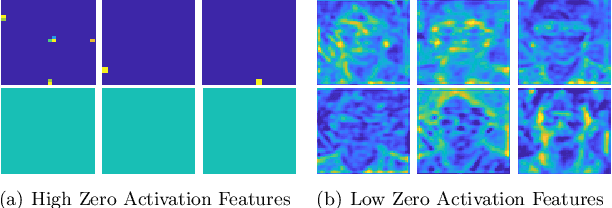Qinghao Liu
Ideal Registration? Segmentation is All You Need
Sep 19, 2025Abstract:Deep learning has revolutionized image registration by its ability to handle diverse tasks while achieving significant speed advantages over conventional approaches. Current approaches, however, often employ globally uniform smoothness constraints that fail to accommodate the complex, regionally varying deformations characteristic of anatomical motion. To address this limitation, we propose SegReg, a Segmentation-driven Registration framework that implements anatomically adaptive regularization by exploiting region-specific deformation patterns. Our SegReg first decomposes input moving and fixed images into anatomically coherent subregions through segmentation. These localized domains are then processed by the same registration backbone to compute optimized partial deformation fields, which are subsequently integrated into a global deformation field. SegReg achieves near-perfect structural alignment (98.23% Dice on critical anatomies) using ground-truth segmentation, and outperforms existing methods by 2-12% across three clinical registration scenarios (cardiac, abdominal, and lung images) even with automatic segmentation. Our SegReg demonstrates a near-linear dependence of registration accuracy on segmentation quality, transforming the registration challenge into a segmentation problem. The source code will be released upon manuscript acceptance.
Reconsider the Template Mesh in Deep Learning-based Mesh Reconstruction
May 21, 2025



Abstract:Mesh reconstruction is a cornerstone process across various applications, including in-silico trials, digital twins, surgical planning, and navigation. Recent advancements in deep learning have notably enhanced mesh reconstruction speeds. Yet, traditional methods predominantly rely on deforming a standardised template mesh for individual subjects, which overlooks the unique anatomical variations between them, and may compromise the fidelity of the reconstructions. In this paper, we propose an adaptive-template-based mesh reconstruction network (ATMRN), which generates adaptive templates from the given images for the subsequent deformation, moving beyond the constraints of a singular, fixed template. Our approach, validated on cortical magnetic resonance (MR) images from the OASIS dataset, sets a new benchmark in voxel-to-cortex mesh reconstruction, achieving an average symmetric surface distance of 0.267mm across four cortical structures. Our proposed method is generic and can be easily transferred to other image modalities and anatomical structures.
Rethinking Convolutional Features in Correlation Filter Based Tracking
Dec 30, 2019



Abstract:Both accuracy and efficiency are of significant importance to the task of visual object tracking. In recent years, as the surge of deep learning, Deep Convolutional NeuralNetwork (DCNN) becomes a very popular choice among the tracking community. However, due to the high computational complexity, end-to-end visual object trackers can hardly achieve an acceptable inference time and therefore can difficult to be utilized in many real-world applications. In this paper, we revisit a hierarchical deep feature-based visual tracker and found that both the performance and efficiency of the deep tracker are limited by the poor feature quality. Therefore, we propose a feature selection module to select more discriminative features for the trackers. After removing redundant features, our proposed tracker achieves significant improvements in both performance and efficiency. Finally, comparisons with state-of-the-art trackers are provided.
 Add to Chrome
Add to Chrome Add to Firefox
Add to Firefox Add to Edge
Add to Edge